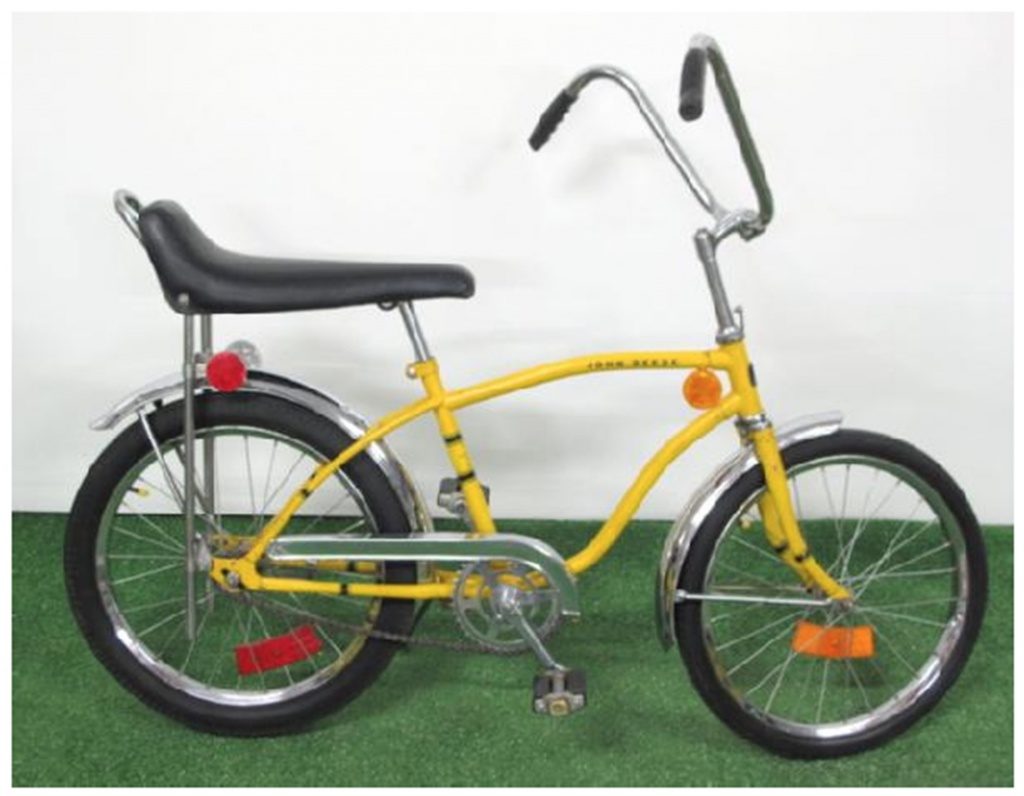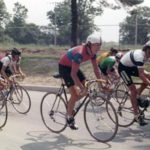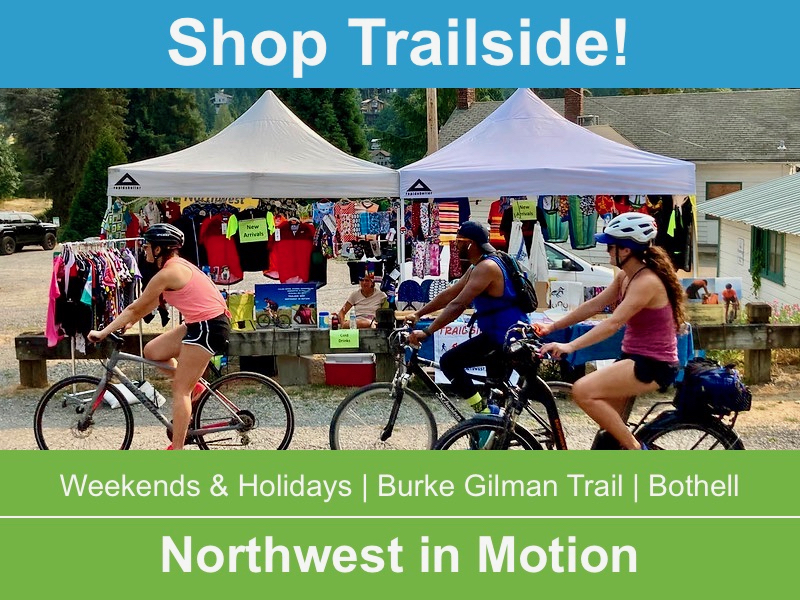The Jerry Baker Memorial Velodrome at Marymoor Park is a world unto itself, and if you’ve never been you are missing out on an important part of Seattle’s cycling culture. During the summer race season, Friday nights feature fast racing and a beer garden, with emcee duties carried out by Phil “Bilko” Stephens.
Phil grew up in the midwest, started cycling as a kid, raced as a teen, and was a member of the team that won the 1991 Little 500. Bicycles have been central to his life. In 2007 his cycling connections led him to the Seattle area where he works for BikeFit and teaches adult track classes at the Velodrome: “I like helping people feel like a kid again when they first get on the velodrome in the Intro Classes. That feeling, if it were bottled, would be worth a fortune.”
Hometown:
Charlotte, Michigan
Education:
Indiana University
How did you get into cycling? What were some of your key early cycling experiences? How did you progress as a cyclist and racer?
I can always remember having a bike of some sort.

I grew up in the Midwest where it was common to be on my bike all day even until it was dark. It was about being outside. From training wheels I graduated to a John Deere bike with a banana seat. 1970’s look and feel for sure!
Elementary school meant getting into riding a BMX bike. My parents were afraid of me getting hurt, so I never entered any races. I guess they thought that if I didn’t race, the urge to be “playing” with bikes would go away?
While in junior and senior high school I mowed lawns in suburban Indianapolis, to save for college. At the time I had moved up to a Ross 10-spd.
I used the Ross to help me get from my house to the various homes that I took care of. While mowing a lawn one evening I saw this racer-type cruise by, so I stopped the mower, jumped on my bike and chased him down to get an idea where he was going. He was surprised by my efforts coming after him. It was obvious that I had just been behind a lawn mower because I was in grass-stained shoes, cutoff shorts, and t-shirt. He said I should think about racing. It just so happened the (former) Prestige Classic event, the Tour of Brookside, was coming up the next week. He explained that it was a criterium on a winding loop with only one hard corner. This guy’s name was Brad, he was with the Speedway Wheelmen, and he was out for an after work training ride. I was intrigued.
After thinking about it, I got myself together and entered the 1983 Tour of Brookside Novice Juniors race–I entered the under 18 beginner’s race. While warming up on the course between other races, a pro racer rode along side me. It was Andy Hampsten of the Levi’s-Raleigh Team. He asked how it was going; all I could mutter was “You’re from the magazines!” He said, “Yeah, I guess I’ve been in a couple.” We chatted about me getting ready to race. It was pretty cool to be at my first event and got to talk with a celebrity VIP rider in a one-on-one scenario. I finished mid-pack for 5th place. I guess I was still “playing” with bikes.
In 1984-1985 I raced as a USCF junior. At the time a guy who was just a couple of years older than me in my high school purchased the US distribution rights to a small Italian bicycle brand. I jumped at the chance to have such a cool Italian bike. I picked the paint scheme and the pantographed components when I ordered it from him. When delivered after waiting an agonizing 9 weeks, I went for a weekend group ride in February and almost got frostbitten from just wearing shorts. I wanted to look PRO on my new bike, and did not dress for the winter conditions. That day taught me to properly dress for the weather and season!
Kinda cool that the guy had some help from his family, but this was a chance to start an import business that he could run from home. His marketing efforts were to sponsor a local racer/coach and one of his star athletes, an amateur from England. They were my inspirations. I got to train and follow them around. They were the ones, along with the Manager of the Major Taylor Velodrome, who dubbed me “Sgt. Bilko” after the black and white Phil Silver’s TV Sitcom – where Silvers played the character Master Sergeant Ernest G. Bilko. A flat top haircut, glasses and a big mouth were the worst of the associations for me. I thought it was better than being called “stinky” or “scooter.” That nickname has followed me through my cycling life, and I think there may be some people who don’t even know my real name.
In 1986 I went to Boise, ID to race Road Nationals after doing well at the Districts Championships where I got 2nd in the time trial (TT) and third in the road race. I wanted to see how the world worked on the national stage. Nationals started bad for me and went south from there. I missed my start time in the TT and finished near the bottom of the results. The road race was in town and either uphill or downhill with little chance to rest on the circuit. I got dropped and did not finish. Bruised ego for sure. I only had money and parental help for road racing, and missed going to Seattle for Track Nationals that year.
In 1987 the Pan Am Games were held in Indianapolis. Being at the velodrome training and racing I got to hang with athletes from around the world. That was a really great time for me as I made the transition to go to Indiana University, home of the Little 500, the race made famous by the movie “Breaking Away.” It was a chance to go to school and race a bike at the same time. I also worked part-time jobs, and my parents ended up supporting some of my cycling activities too. A gift from my parents for high school graduation was money to purchase a used track bike from my coach who used it as a pro racer. I have saved the frame and will never get rid of it.
During this time I got to spread my wings and travel to other nearby velodromes including Dorais Park (Detroit), Northbrook, and Kenosha. During the summer it was possible to race 5 nights a week! Tuesday at Kenosha, Thursday at Northbrook, Friday at the Major Taylor Velodrome, and criteriums on the weekends made the bike life easy.
In 1991 my fraternity team (most teams are comprised of housing units – dorm teams, Greek letter teams, etc.) won the Little 500. It was covered by ESPN. That was a time when being a cyclist wasn’t wacky.
The economy wasn’t great when I graduated, but I landed an Assistant Manager of Programs job at the Major Taylor Velodrome. This was an Indy Parks Facility that still had some resources left from Pan-Am Games, but they were limited. Working with the Velodrome Manager, we did a lot of work to quantify the usage of the place. We tried many things to pay for the cycling. ESPN-2’s Saturday Night Lightning Go-Kart racing was one of the bigger things that people could remember. Danica Patrick was racing go-karts then. I got a lot of great experience with TV production stuff. We hosted Elite Nationals for 3 years in a row due to sponsor wishes.
At the Major Taylor Velodrome I started to dabble in commentary at race events. The velodrome had a limited budget so I did it so the show to go on with limited expense. That must have worked OK because I soon got calls for other announcing gigs. Events like US Pro Crit Champs at Downer’s Grove and other National events. I traveled to Arkansas for National Calendar Events in the spring and fall of each year. I still do the Joe Martin Stage Race in the Spring. With USA Cycling I was able to announce at least one National Track Championship a year – Elites, Masters, Collegiates were all events I got to do.
The next few years were interesting as the City Parks Dept wrestled with keeping the facility funded and staffed. My job went from full-time to seasonal contract labor, so I had to look for work alternatives. I even went to Fort Lauderdale for a winter seeking seasonal employment at the Brian Piccolo Park Velodrome. Florida was a whole chapter unto itself; I experienced so many culture shocks from my Midwestern life.
Finally, funding ran dry at Major Taylor Velodrome when management switched to a private group. I couldn’t wait for things to pick up. I got a job in publishing industry. That worked for a while. Then I got a chance with cycling and a portable velodrome: The Vandedrome! 167 meters per lap with 54 degree banked turns.
I moved to New York and helped put a new surface on the track, and helped with the process to certify riders to train and race. The track was vastly steeper than any of the other USA tracks, so emphasizing safety was a priority for the success of the project. The ultimate goal was the cycling events in the 1998 Goodwill Games in NYC. We were actually on the Wagner College football field for the games themselves.
In 1997 I announced the first International Paralympic Committee (IPC) World Championships in Colorado Springs . This was the first step in bringing all the disciplines together – blind, amputee and cerebral palsy. It still ranks as one of the greatest sport moments that I have witnessed in person. There are such amazing stories from each of the athletes, and t’s amazing to see how fast they go on bikes. I got to cover it all – road and track. I have especially fond memories of Italians, who were such a great group and I hung out with them.
How did you get to the Pacific Northwest?
When I raced as a Junior at the velodrome in Indy I got to race with Paul Swift, who had a mustache in high school. I was lucky to be able to shave at that age, so we wondered whether this guy from Wisconsin was a sand-bagger? He wasn’t. He really was naturally fast. National-caliber-type of fast. During the process of figuring out that he was naturally fast we became friends.
Paul started BikeFit LLC here in Washington in 2007. He got me to move from Denver where I was in marketing for an aftermarket auto parts company.
How did you get involved at the (now) Jerry Baker Memorial Velodrome?
When I moved to town in 2007 a few people who knew me from racing at other velodromes/events said I should announce the Friday night races (aka the “show”). I met Jerry Baker who was willing to give me a shot. I guess it worked out – as I have been doing it ever since. Jerry’s method for seeing whether someone would fit a particular situation was having people get ‘thrown in the deep end of the pond,’ so to speak. I jumped and kept swimming without his hand-holding. In addition to announcing I help with the Adult Intro Classes. My past experience with velodrome facilities and dealing with municipal parks departments is beneficial. I like helping people feel like a kid again when they first get on the velodrome in the Intro Classes. That feeling, if it were bottled, would be worth a fortune.
Talk about the influence of Jerry Baker both at the velodrome and the local cycling scene in general.
He was doing things behind the scenes that no one really knows about. He knew the history of everything cycling – not only local but national, too and how those environments intertwined. He was a great connector between the competitive cycling groups and the recreational and advocacy people. He was able to have the groups support one another in ways that they may have not realized until he put them together. I dread the process of us in Seattle cycling learning to manage going forward without him keeping us coordinated. Such is the process of life.
How is track doing in relation to other cycling sub-disciplines?
Currently it is my understanding that track is like the rest of competitive cycling–currently there is a decrease in the numbers of participants and events compared to a few years ago (in the USA). I think track cycling seems to be getting a push in the media coverage – at least for us (as English speaking cycling participants) as British Cycling have been successful in regards to Olympic/Worlds track cycling medals – but the country has been on a effort of physical fitness improvements via cycling. They also have transportation efficiency needs where cycling is seen as playing a factor. The sport as a whole is still dealing with the doping scandals. Until Lance goes away I don’t think that chapter will be closed.
Talk about how the velodrome lends itself to a different kind of community than other cycling environments.
The velodrome is a cycling stadium, whereas races like Tour de France are out in the countryside. As an in-person spectator at an event, track racing is similar to popular team sports. A stadium event has all the hospitality and marketing opportunities. The stadium environment has food/drink/merchandise vendors that are not far away – even if you have to leave your seat. For some, the velodrome is a Friday night out to see friends, have a glass of wine… they may not care who wins any of the races. It’s as much a social event as a sports event.
For folks interested in trying out cycling at the track, what is the process?
It’s easy if you have an internet connection. Go to www.velodrome.org, click on the classes page, and follow the easy steps there to sign up. This will be possible once the schedule for 2016 has been posted (generally happens after Cascade’s Bike Expo in mid-March). Then show up for a 4-hour introduction to track racing class. All a person needs is a helmet and the ability to ride a bike. The rest happens during the class. You do not need to have racing experience. The banked oval is designed for racing. Riding laps on it can boring after a while, but racing with friends and like-minded people is fun and challenging.
Who are some of the up-and-comer track racers we should keep an eye on?
It’s been on social media that USA’s Chloe Dygert, the 2015 Junior road and TT winner in Richmond, is being looked at for USA Women’s Team Pursuit. She’s been recently doing a training camp with Sarah Hammer. Hammer has been the cornerstone athlete for women’s endurance track the past few Olympics as well as Rio. The winter and early spring are the World Cup Track events for riders (and their country) to earn points to secure position to race in Rio (there are field limits ~ approx. 30 riders). I am excited for USA’s chances going into 2016.
Besides Chloe, who is now an international star, I am excited for normal folks who’ve have taken the Adult Intro Class and are discovering cycling competition and are developing a process to see how great they can be. While these people with jobs and families and the stuff of normal lives — their level of track cycling development may be just reaching for an upgrade to regional caliber Category 3 and Friday Night Racing, it is still so very exciting to see them progress from the intro class to strive to their full potential. That progress is HUGE from where they were to where they are now going. That’s a really cool thing and our Jerry Baker Memorial velodrome works to make those kinds of scenarios happen all the time.
From your perspective what should we watch for in the track world in the next few years?
According to recent updates from the UCI, the World Masters (35 yrs and older) Track Championships will be in our time zone (in Los Angeles) in 2017 and 2018. This will make it easier for some of us to participate.
There have been some rumblings in pro road racing that could cross over to the track–in how racing is organized. Professional teams are on shaky ground with sponsors putting in money and taking it out – leaving teams without a stable foundation. If the model of how the teams are organized is changed to more like Football – where teams have “owners” that could spill over to track racing and how velodromes are built and funded. It could change how track cycling aligns in Olympic sports potentially. My point is along the lines that Tour De France is a big deal/money event – but isn’t tied to Olympics. Mark Cavendish put it something like this: He races the Tour to make a living, it’s a job, but he races for Olympic glory for his country, a once in a lifetime kind of thing. Not a job.













